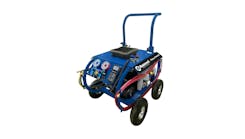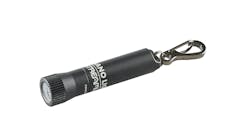As carmakers have improved vehicle designs over the years, the aftermarket faces continuous challenges. Nowhere is this more evident than in HVAC systems, as evidenced by the results of the recently completed the Mobile Air Conditioning Society (MACS) Field Services Survey presented at the MACS Training Event and Trade Show at the New Orleans Sheraton. This marked the first complete MACS field survey conducted in the last 10 years.
Repair shops are seeing a reduction in the required servicing of mobile air conditioning systems, notes Ward Atkinson, MACS 30-year technical director, in presenting the survey results in New Orleans.
As systems have improved, vehicles are not having A/C issues as frequently, says Atkinson. Nor are aftermarket shops seeing the same repairs. Shaft seal leaks on compressors, once a common occurrence, fell since 2003. The most common components responsible for leaks in 2013 were hoses, condensers, service ports and compressor cases.
Refrigerant circuit repairs have become less common since as far back as 1991, Atkinson notes, while non-refrigerant system controls repairs have increased since the early 1990s.
Those who plan to remain in the A/C business will need to be better trained, Atkinson observes. They will have to understand the control circuits and the fault codes and not just refrigerant circuits. “You’ve got to be a refrigerant guy and a control guy,” he says. “You have to know the whole system.”
R-1234yf takes hold
Then there’s the new R-1234yf refrigerant. While not an immediate concern for the aftermarket, R-1234yf will require shops to invest in new recovery, recycle and recharge (RRR) machines to service vehicles with R-1234yf. The new refrigerant is mildly flammable, Atkinson notes, so service equipment is designed for a new procedure to assure that a potentially leaking system is not charged. In addition, for safety reasons, R-1234yf leaking evaporators cannot be repaired or salvage vehicle units used, and only new SAE J2842 certified evaporators that have a label can be installed.
“This new equipment is not at all like 134a equipment to service 1234 cars,” Atkinson notes.
As the new refrigerant comes into the market, shops will eventually have to service vehicles with the new refrigerant as well as those with R-134a refrigerant.
In his MACS report, Atkinson noted the following vehicles are or will be using R-1234yf this year: Cadillac XTS (2013 and 2014), Chevrolet Spark EV (2014), Chrysler 300 (2014), Dodge Challenger (2014), Dodge Charger (2014), Honda Fit EV (2013, 2014), Jeep Cherokee (2014), Range Rover (2014) and Range Rover Sport (2014).
Manufacturers of RRR machines, leak detection systems and refrigerant analyzers demonstrated more systems at MACS this year designed to service the new refrigerant.
Chrysler’s Alan McAvoy, technical advisor at the company’s Midwest Business Center, followed Atkinson’s presentation at MACS with a report on the 2014 Jeep Cherokee, the first Chrysler vehicle equipped with R-1234yf. He claimed the procedures for servicing the new refrigerant are similar to R-134a, but he noted the R-1234yf carries a higher price tag in addition to additional service equipment.
Don't forget about EVs and hybrids
Electric, electric hybrid and plug-in hybrid vehicles are also increasing, posing some unique A/C service considerations. Aftermarket shops are already seeing more of these vehicles. Many electric and hybrid cars have high-voltage electric air conditioning compressors, and some use active air conditioning systems and heating systems to control battery pack temperature. Jack Rosebro, a specialist in EVs and hybrids, gave an overview of A/C service in these vehicles at MACS.
Some plug-in hybrid and electric vehicles use high-voltage heat exchangers to produce the heat that would normally be supplied to a conventional vehicle’s HVAC system by its engine, and as with conventional hybrids, current leakage to the chassis or the component ground can be a concern. To diagnose such an issue, Rosebro says the service tech needs an insulation resistance tester, also known as a megohmeter, used in conjunction with scan data.
Manufacturers of leak detection systems have introduced systems specifically for cars with electric compressors.
Much is changing in the mobile A/C business. New vehicle technologies require a deeper understanding on the part of aftermarket technicians who want to service the newer vehicles coming into their shops. They need access to repair information and they need to be trained in how to diagnose all aspects of these newer vehicles. They also need access to the most current diagnostic and repair tools.
Kylie Hirko assumes associate publisher role
Kylie Hirko is assuming the role of associate publisher for PTEN beginning with this issue. Hirko brings a strong understanding of automotive repair tools and equipment, having spent seven years as the West Coast multimedia representative for PTEN, Professional Distributor and Fleet Maintenance magazines. Hirko's understanding of the market will provide value to all aspects of the magazine. Larry Greenberger remains group publisher for the Cygnus Transportation Group.


